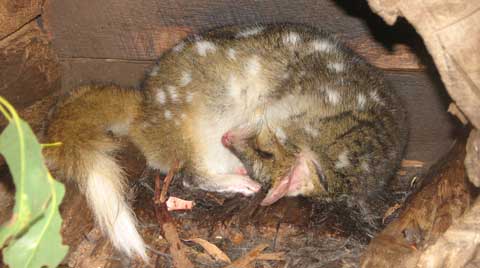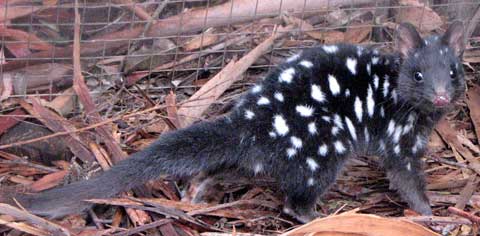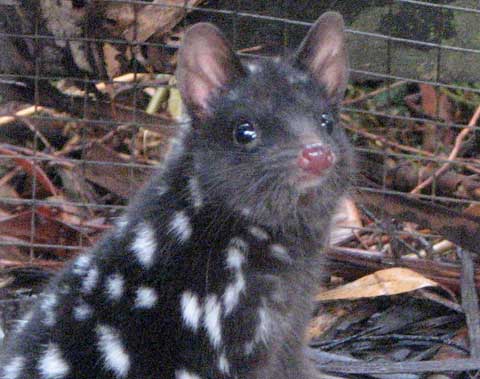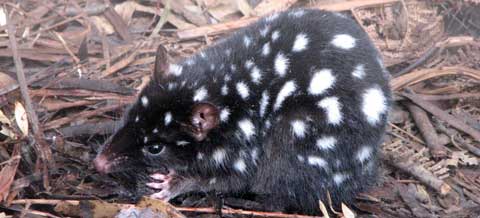
My ‘guest accommodation’ is an ex-workshop tacked on to a shed. It is of corrugated iron, but lined, and comfortable; far enough from my cabin for privacy, close enough for convenience, and with pleasant orchard views and surrounds.

When I returned after my two months away this winter, I suspected a possum had moved into the roof of this section. Telltale tufts of insulation wool were sticking out from between the roof and the window awning, and a few floated about on the grass.
I checked inside and all seemed fine.
But as spring advanced, I noticed that the climbing roses were being allowed to put forth new leaves and even buds – at least from the height at which the wallabies can’t reach. I assumed the rose-loving possum must have moved on — or had been digested by the python.

Something had changed inside, too: over each bed the ceiling lining had clearly been under stress. The double bed had a huge stain that went right through the mattress, and the top rug on the double decker bunks was bedecked with what looked like bits of nesting material.
Possums do mighty pees, so I could blame it for the stain, but the rest…? And what about the roses? Did I have a ‘live-and-let-live’ possum at last?
When I finally had a visitor willing to climb ladders and prise away roofing trims to investigate, the nest was there; in fact there were two, and full of scats large and small. They were not of possum origin, but quoll. In a way they were related to possums, as quolls eat them.
I had known a quoll was back, or visiting nightly, from fresh scats in the shed and on the verandah. A parmesan cheese wrapper got the once-over on the verandah the other night. I had assumed it was living in the shed, in the horizontal pile of old doors where my earlier quoll tenant had raised many young ones.
Clearly, this year’s quoll wanted better accommodation, with views. So until I can be sure whether it is a ‘she’, with offspring, no more can be done. If that’s the case, until the end of summer when the kids have come of age, I’ll have to turn away visitors or tell them to bring a tent. The beds have been stripped, moved, and plastic laid.
I need one of those signs they have in caravan parks and camping areas: ‘All visitors must call at office before proceeding further’.
But at least I might get some roses this summer.



